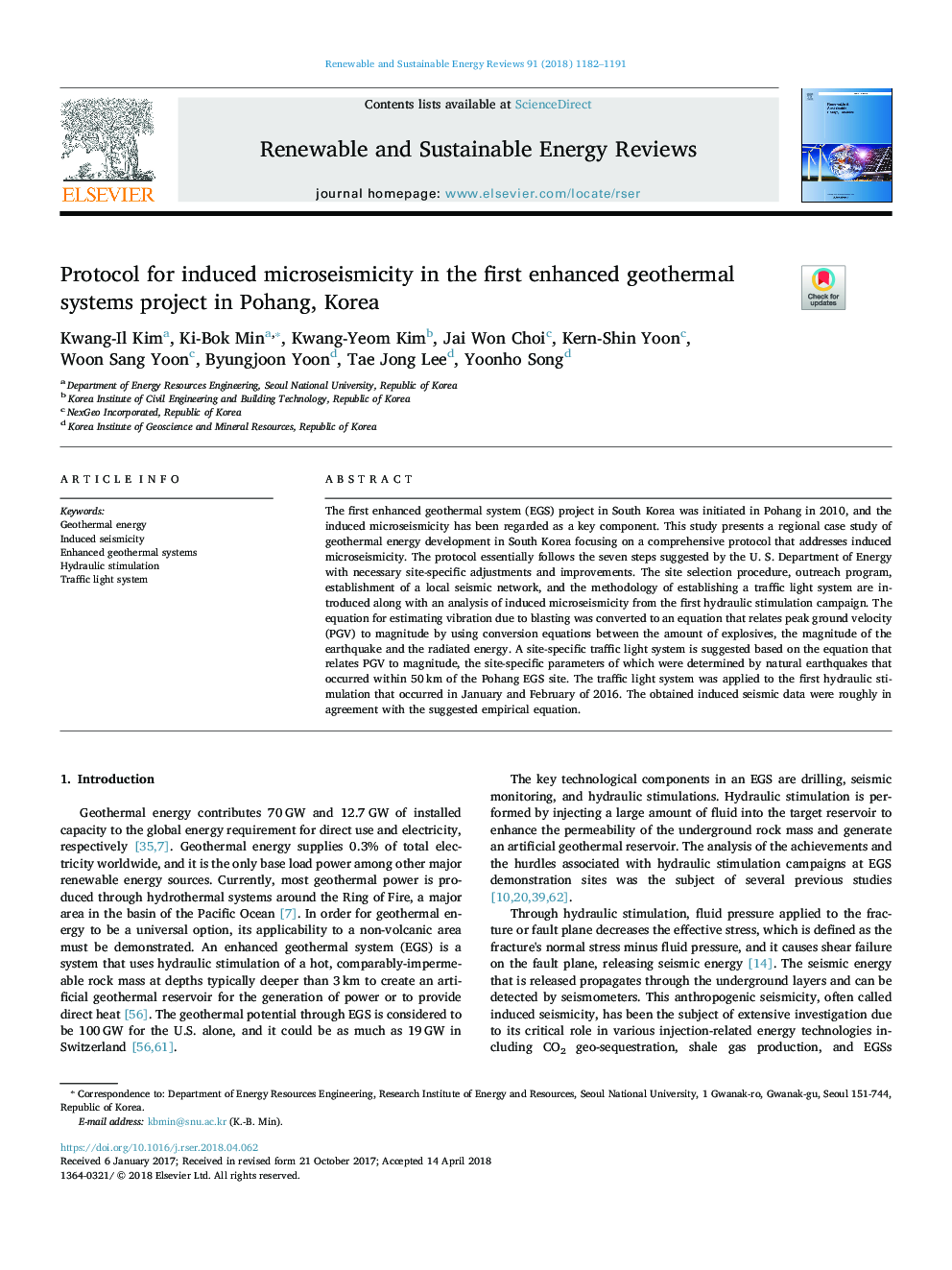| Article ID | Journal | Published Year | Pages | File Type |
|---|---|---|---|---|
| 8111306 | Renewable and Sustainable Energy Reviews | 2018 | 10 Pages |
Abstract
The first enhanced geothermal system (EGS) project in South Korea was initiated in Pohang in 2010, and the induced microseismicity has been regarded as a key component. This study presents a regional case study of geothermal energy development in South Korea focusing on a comprehensive protocol that addresses induced microseismicity. The protocol essentially follows the seven steps suggested by the U. S. Department of Energy with necessary site-specific adjustments and improvements. The site selection procedure, outreach program, establishment of a local seismic network, and the methodology of establishing a traffic light system are introduced along with an analysis of induced microseismicity from the first hydraulic stimulation campaign. The equation for estimating vibration due to blasting was converted to an equation that relates peak ground velocity (PGV) to magnitude by using conversion equations between the amount of explosives, the magnitude of the earthquake and the radiated energy. A site-specific traffic light system is suggested based on the equation that relates PGV to magnitude, the site-specific parameters of which were determined by natural earthquakes that occurred within 50â¯km of the Pohang EGS site. The traffic light system was applied to the first hydraulic stimulation that occurred in January and February of 2016. The obtained induced seismic data were roughly in agreement with the suggested empirical equation.
Keywords
Related Topics
Physical Sciences and Engineering
Energy
Renewable Energy, Sustainability and the Environment
Authors
Kwang-Il Kim, Ki-Bok Min, Kwang-Yeom Kim, Jai Won Choi, Kern-Shin Yoon, Woon Sang Yoon, Byungjoon Yoon, Tae Jong Lee, Yoonho Song,
